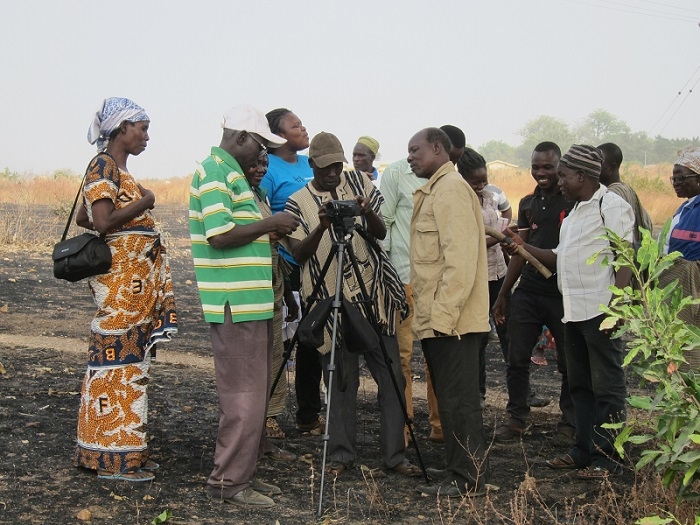In an unused school classroom in the dry, dusty village of Sekoti, Ghana, 11 community members gathered to learn how to make a video. Many of them had never even used a camera before, much less operated a microphone. Participatory video is an empowering and creative process that allows those who understand their local issues best to have a voice. It is a great tool for knowledge sharing and inclusive agricultural research for development at a community level.

The International Center on Tropical Agriculture and its partners, the International Union for Conservation of Nature, University for Development Studies and The Association of Church-based Development NGOs have been carrying out a funded project by the CGIAR Research Program on Water, Land and Ecosystems on farmer-led ecosystem management for improved livelihoods. The project team decided that participatory video would be a good way to capture the views and voices of local community members about their landscapes. Over the course of a week, the group of 6 men and 5 women learned to film a video, from the very basics of assembling the equipment and shooting scenes, to conducting interviews and finally, editing.
Deciding on the title “We Can”, the video team from the two communities of Damolgo and Sekoti produced a short video on the practices they feel are critical for maintaining their environment, improving their soils, and supporting their livelihoods.
The video, filmed in the local Frafra (Nabit) language, features farmers describing the importance of trees, stone bunds, contour planting and vetiver grass strips, mulching and manuring and the negative effects of bush burning. Trees in these communities, and indeed throughout the northern regions of Ghana, are critical for local livelihoods. They provide fodder, medicine, firewood, fruit, and nuts. Shea (Vitellaria paradoxa) and dawadawa (Parkia biglobosa) trees in particular are essential products for women’s livelihoods, used both for home consumption in food preparation and in soap and other cosmetic products. Shea is sold locally and enters a global value chain. Trees are under considerable pressure for use (firewood and charcoal), but also are being cut down as agriculture expands. Bush burning also damages or kills these important resources.
Watch the participatory video here:
Trees are easy enough to show on film, but how do you use video to show soil improvement and management? These farmers’ creative solution featured demonstrations of stone bund construction, manure collection, compost application, and more. The farmers emphasize that these efforts are labor intensive, but important for crop yields. Farmers with few or no livestock walk through rangeland areas to collect cow dung in buckets and transport it back to their homesteads where they mix it with compost or crop residues to later apply to their farms. The video crew also visited one farmer and interviewed him about his vetiver grass strips planted on the contour to address soil erosion.
The video team discussed the issues affecting their farms, landscapes and communities at length and ultimately, their film showed how farmers themselves could manage their environment and improve their lives. Indeed, they saw these practices as essential ways to improve their crop yields and thus reduce poverty in the area. One woman added: “NGOs and others come into your community to tell us how they can help with poverty but we can also do this on our own through these efforts”.
The translated video filmed and directed by this group of farmers is coming soon!












